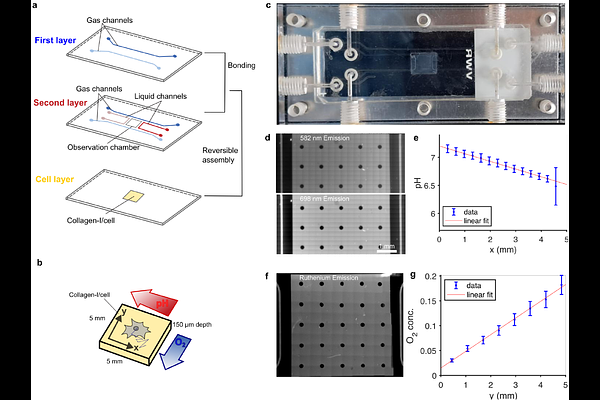A microfluidic model to recapitulate pH and oxygen gradients in solid tumors

A microfluidic model to recapitulate pH and oxygen gradients in solid tumors
Li, Y.-F.; Dos Santos, L.; Chara, M. R.; Auxillos, J.; Sandelin, A.; Pedersen, S. F.; Marie, R.
AbstractThe tumor microenvironment (TME) plays critical roles in cancer development, aggressiveness, and treatment resistance. The TME comprises cellular (stromal) components as well as gradients of physicochemical properties, including hypoxia and acidosis. Understanding of how hypoxia and acidosis gradients impact cancer phenotypes is lacking, in large part due to challenges in precisely mimicking and controlling such gradients in a manner compatible with the growth of cancer- and stromal cells. Here, we design and validate a microfluidic device enabling orthogonal gradients of oxygen and pH. Both gradients are established by diffusion from a nearby source and sink in the observation area in the absence of flow. This produces linear gradients at steady state. Our device enables a wide range of spatiotemporally resolved analyses, from \'omics to live cell imaging, interrogating the impact of the physicochemical TME on disease development. The design is easily adaptable, making it valuable for a wide range of questions involving physicochemical gradients.